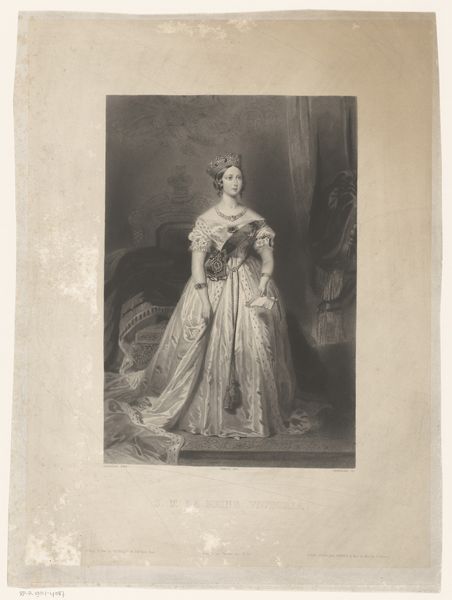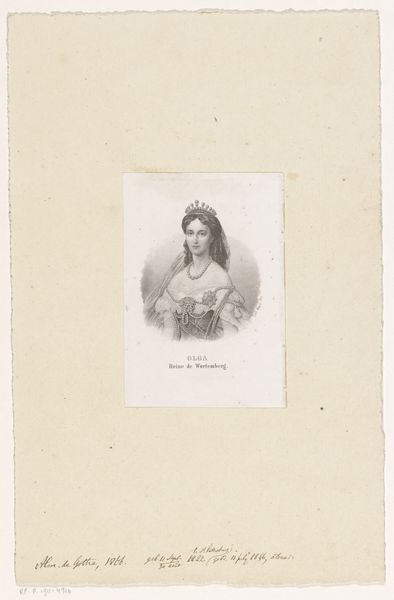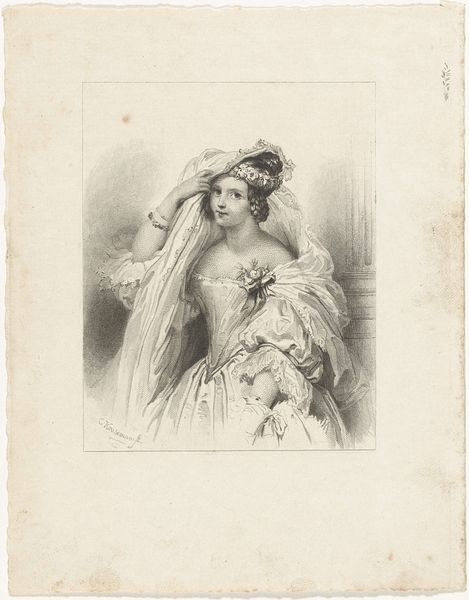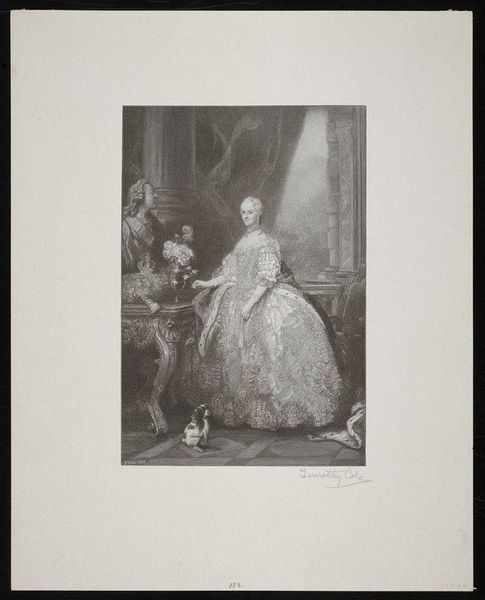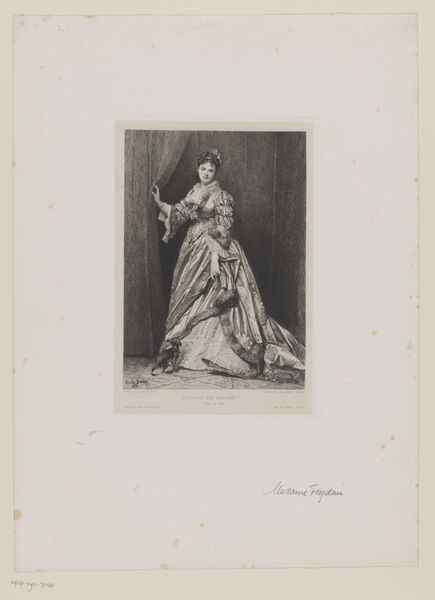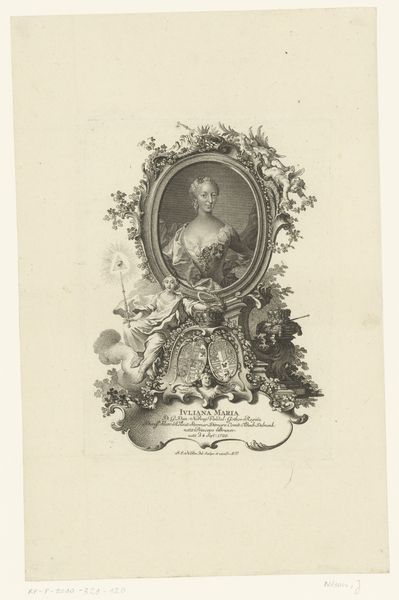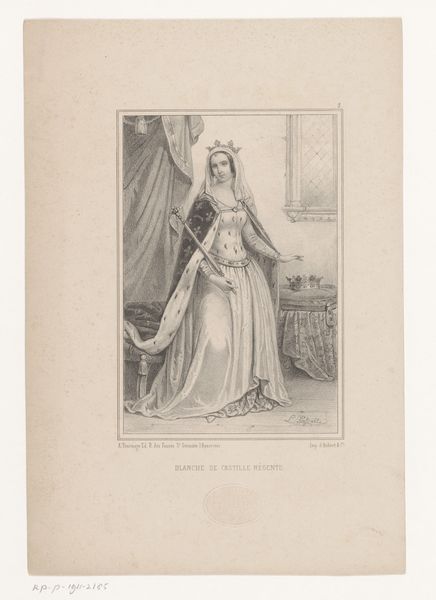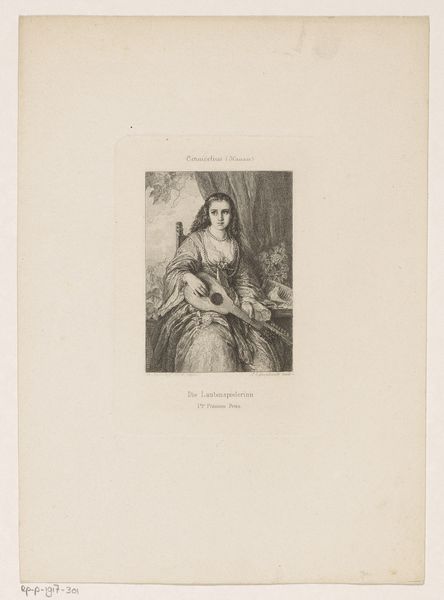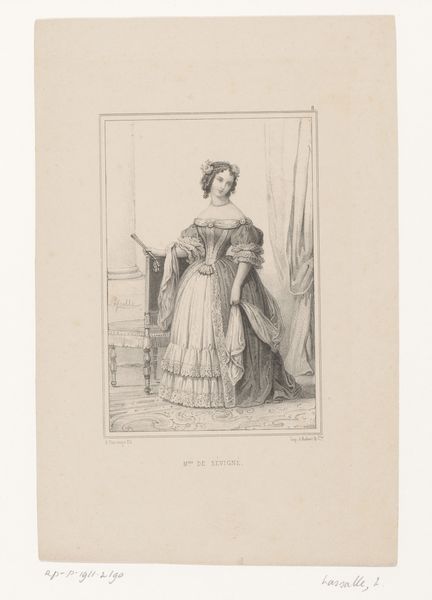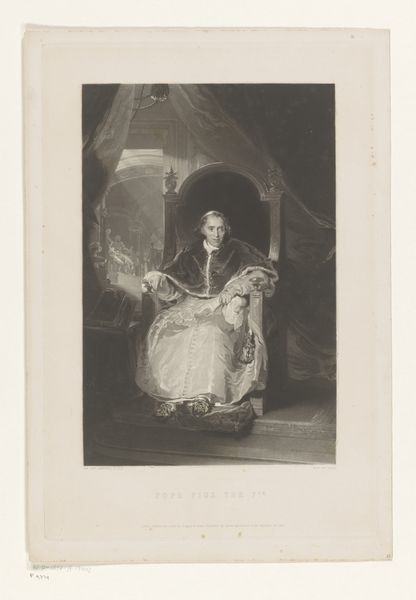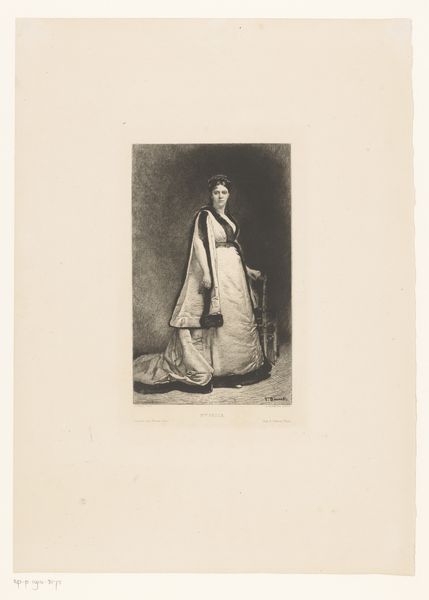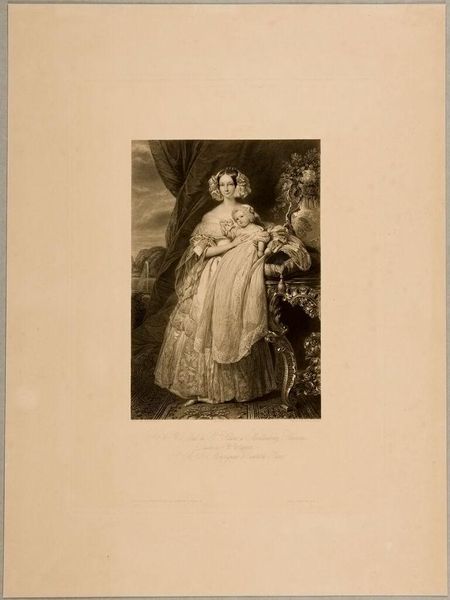
print, engraving
#
neoclacissism
#
16_19th-century
# print
#
history-painting
#
engraving
#
realism
Dimensions: height 325 mm, width 231 mm
Copyright: Rijks Museum: Open Domain
Editor: Here we have Jean Baptiste Alfred Cornilliet's "Portret van Anna Paulowna Romanowa", likely created between 1840 and 1871. It's an engraving, so a print. The detail achieved in this monochromatic work is remarkable! What stands out to you about this piece? Curator: The first thing that grabs me is the meticulousness of the engraving process. Consider the labor involved in creating such a detailed image, transferring it to a metal plate, and then producing multiple prints. It elevates printmaking from a mere reproductive technology to a craft worthy of serious attention. Editor: I see what you mean! It's easy to overlook the craftsmanship when we see prints today. Does the material impact its message, beyond just technical skill? Curator: Absolutely. The choice of printmaking as a medium is itself a statement. It allows for wider distribution of the image, democratizing access to royal portraiture, even if in a limited way. This creates an interesting tension between the exclusivity of royalty and the accessibility afforded by mass production. Consider who the target consumer of such a print would be. Editor: So, thinking about this realistically detailed portrait of Anna Paulowna within its historical context – printmaking could offer broader audiences a sense of connection with royalty? I guess there is more at play here than just capturing likeness, if you examine the conditions of its production and distribution. Curator: Exactly! The social context of production informs our understanding and interpretation of the final art object. The means by which images are disseminated becomes central to understanding its impact. Editor: That's a great way to think about it! Looking beyond the face and focusing on the how and why... it's much more complex than just a portrait. I'll definitely approach similar works with this perspective moving forward. Curator: Wonderful! I have gained insights as well, understanding how a seemingly traditional form, portraiture, is shaped and altered through its material process.
Comments
No comments
Be the first to comment and join the conversation on the ultimate creative platform.
